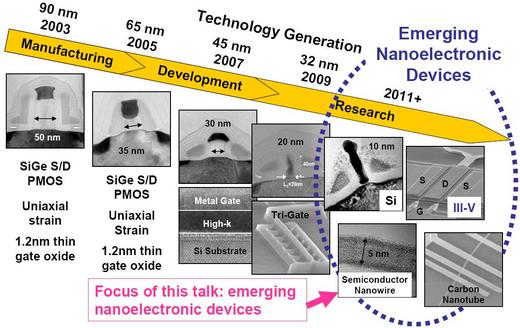
High-k materials
| To build next-generation transistors, new materials that show promise for replacing the silicon dioxide gate dielectric is required, where continued thinning makes it increasingly difficult to control current leakage. This thicker class of materials, known as "high-k," will replace today's silicon dioxide technology and then provide extendibility over several generations.
"High-k" stands for high dielectric constant, a measure of how much charge a material can hold. Different materials similarly have different abilities to hold charge. Imagine a sponge, which can hold a great deal of water; wood, which can hold less; and glass, which can hold none at all. Air is the reference point for this constant and has a "k" of one. "High-k" materials, such as hafnium dioxide (HfO2), zirconium dioxide (ZrO2) and titanium dioxide (TiO2) inherently have a dielectric constant or "k" above 3.9, the "k" of silicon dioxide.
The dielectric constant also relates directly to transistor performance. The higher "k" increases the transistor capacitance so that the transistor can switch properly between and on and off states, with very low current when off yet very high current when on. |
|


 字體:小 中 大
字體:小 中 大

 字體:小 中 大
字體:小 中 大